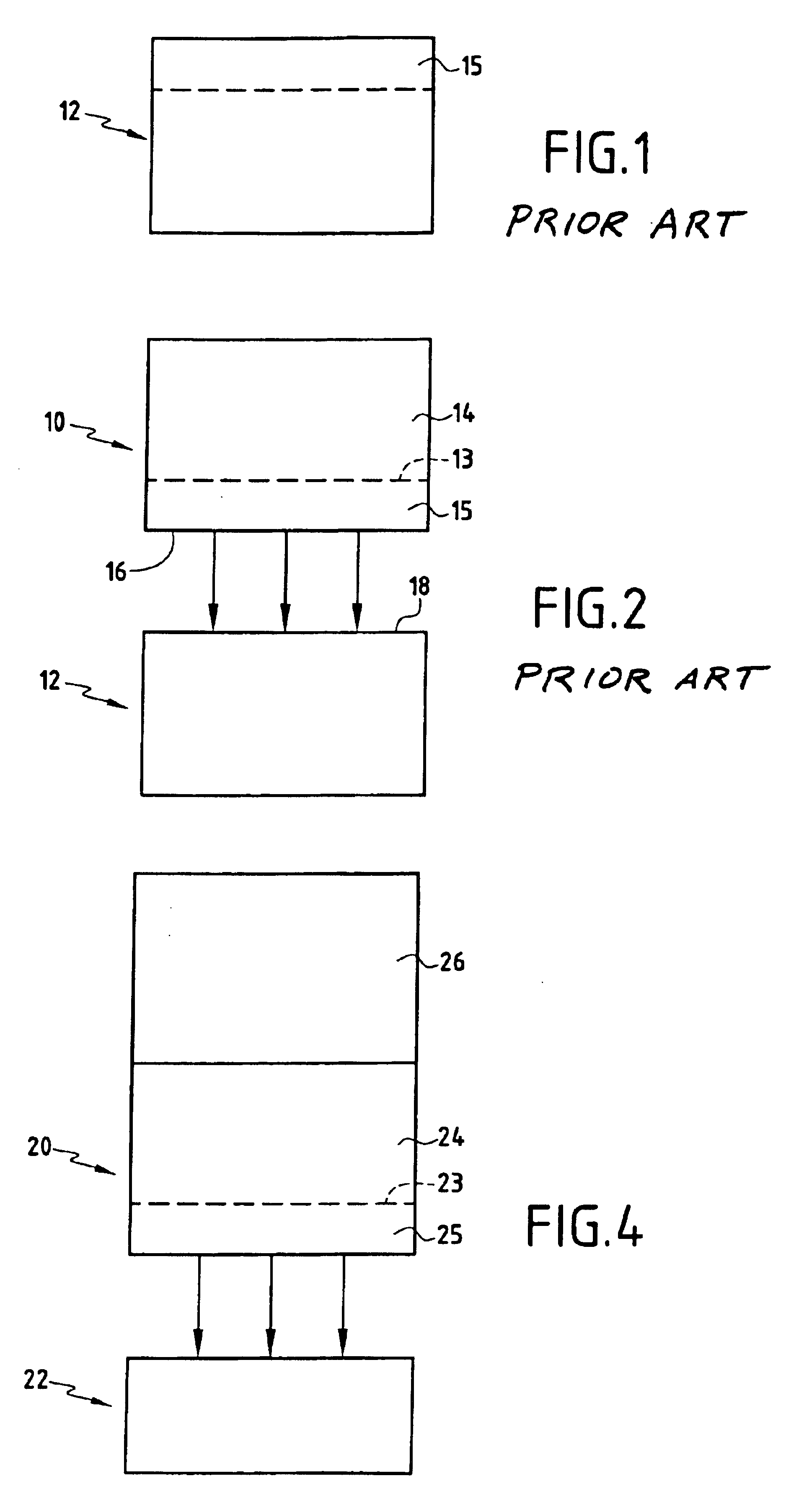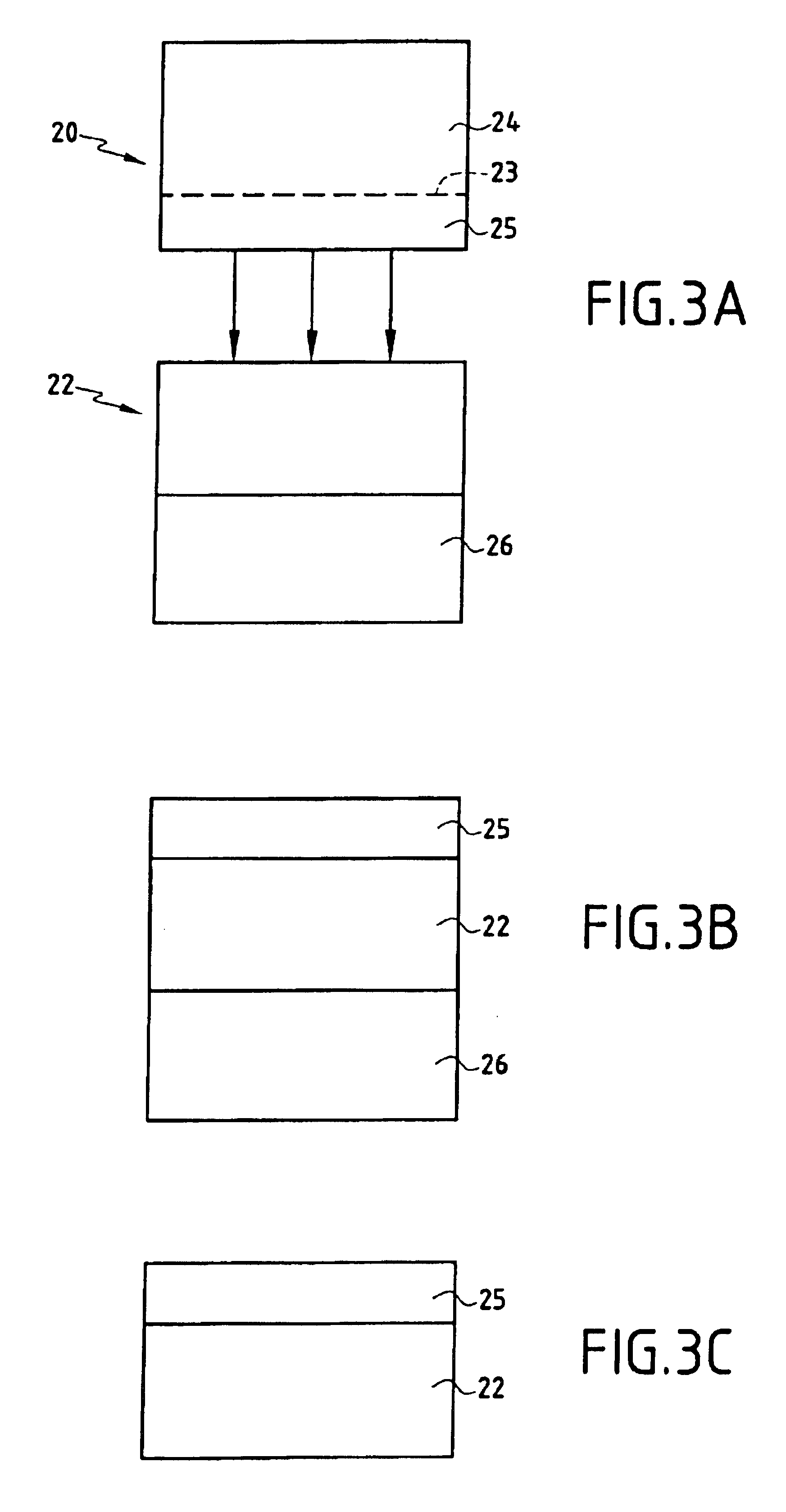Methods of producing a heterogeneous semiconductor structure
a semiconductor structure and heterogeneous technology, applied in the field of heterogeneous structures, can solve the problems of plastic deformation, delamination or detachment of the substrate, least one of the two substrates breaking, etc., and achieve the effect of improving the quality of the bond and reducing the curvature or deformation
- Summary
- Abstract
- Description
- Claims
- Application Information
AI Technical Summary
Benefits of technology
Problems solved by technology
Method used
Image
Examples
Embodiment Construction
A first example of an implementation of the present method is illustrated by FIGS. 3A to 3C. In FIG. 3A, a first substrate 20 is formed from a first material, and a second substrate 22 having a thickness in the range from about 500 μm to about 1200 μm is formed from a second material. The second substrate has a coefficient of thermal expansion that is different that that of the first substrate. For example, at ambient temperature the relative difference between the two coefficients of thermal expansion is at least about 10% but can be about 20% or even more.
In one example, the first substrate is formed from silicon and the second substrate is formed from quartz. It is also possible to have a silicon-sapphire or silicon-glass type assembly.
In a first step (FIG. 3A), atomic or ionic implantation is carried out on the substrate 20 to form a zone of weakness 23 or fracture zone. The volume of the substrate 20 is thus separated into a lower region 25 (with a thickness in the range of abo...
PUM
 Login to View More
Login to View More Abstract
Description
Claims
Application Information
 Login to View More
Login to View More - R&D
- Intellectual Property
- Life Sciences
- Materials
- Tech Scout
- Unparalleled Data Quality
- Higher Quality Content
- 60% Fewer Hallucinations
Browse by: Latest US Patents, China's latest patents, Technical Efficacy Thesaurus, Application Domain, Technology Topic, Popular Technical Reports.
© 2025 PatSnap. All rights reserved.Legal|Privacy policy|Modern Slavery Act Transparency Statement|Sitemap|About US| Contact US: help@patsnap.com



